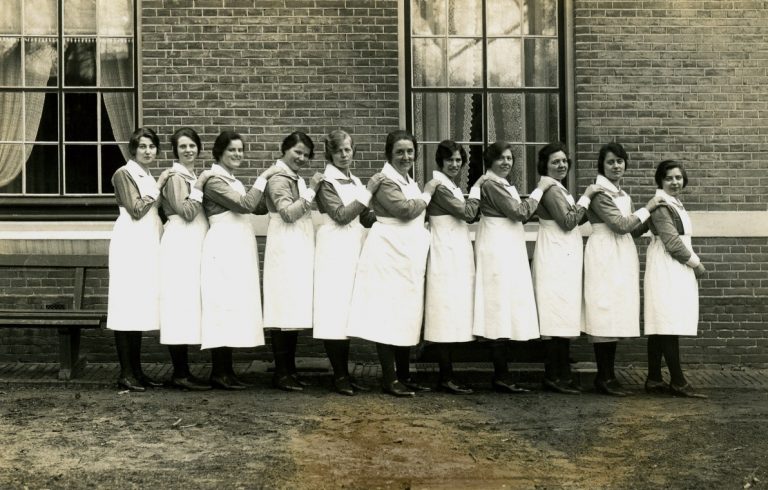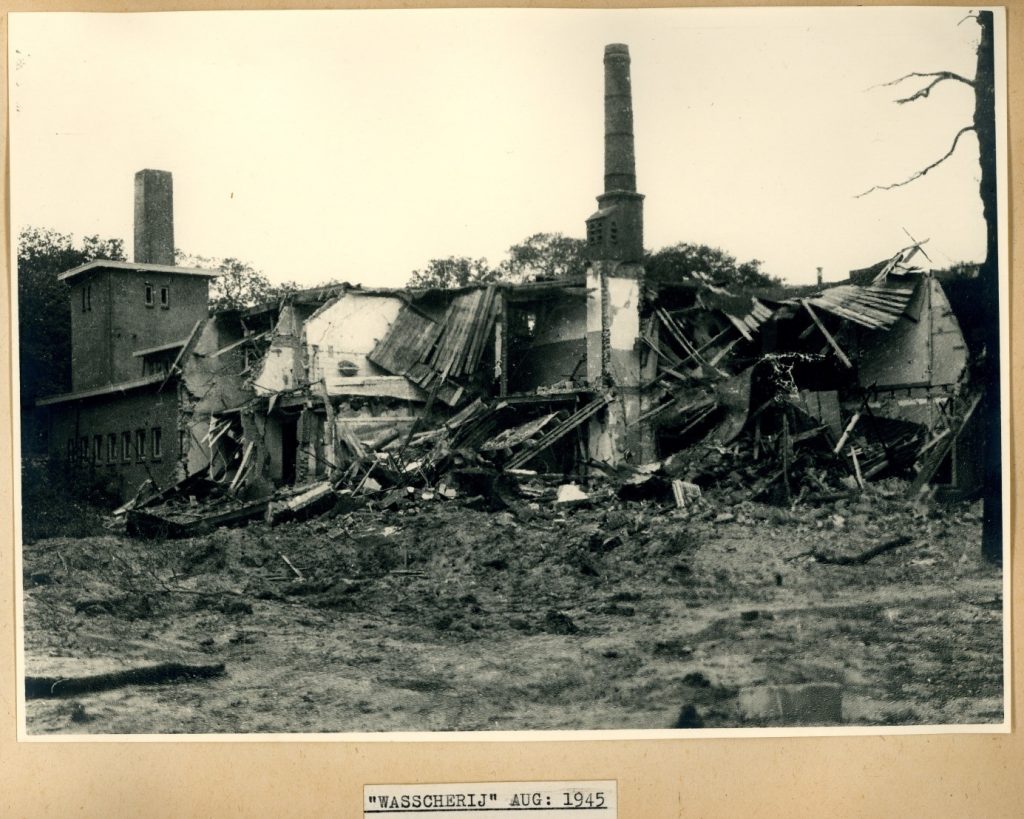By Corry van Straten
When the Second World War broke out in the Netherlands in 1940, there were two psychiatric hospitals in Loosduinen: Rosenburg and Bloemendaal. What happened to these institutions during the war is described in my book “Een wereld die er niet meer is (2015)”. Both institutions merged into Parnassia Groep after 1998.
Rosenburg and Bloemendaal
In 1940 both institutions provided a good standard in mental health care. The Bloemendaal institution was inspired by the Christian Reformed theology. The Rosenburg institution was the successor to the old city lunatic asylum at Slijkeinde.
During the summer of 1942 everything changed, because the Nazis occupying The Hague ordered two major actions. The first action was a series of raids to find and remove all Jewish patients, staff and people in hiding. The second action was the evacuation of all other patients. Bloemendaal had to be emptied because it was in the perimeter of the Atlantikwall. Rosenburg had to be emptied to provide shelter for occupants of other nursing homes and hospitals, and also, according to the Nazis, because psychiatric patients were not easy to move in a crisis situation.
Preparations began in the autumn of 1942, with unrest and uncertainty. Management, doctors, nurses and other personnel devoted themselves to helping all patients in the best possible way, but always under the watchful eyes of the Germans.
Deportation of Jewish inmates
The first raid took place on New Year’s Eve 1942. Nurses were not allowed to accompany any of the deportations, although they did prepare and bring packed lunches. They had to watch with regret as their Jewish patients, residents and people in hiding were taken away. The grounds were cordoned off at every deportation and surrounded by the Hague police. This first deportation was calm and orderly.
After that, the raids were more chaotic and cruel. Sick people, sometimes only in nightwear, were dragged into train cars and taken via Westerbork to Auschwitz and Sobibor, where they were killed. Indescribable suffering. A black page in the history of Rosenburg and Bloemendaal. A total of 251 Jewish patients and people in hiding were deported.
Evacuations
The evacuation of the other patients went quietly and was well organized. The patients remained in the care of nurses and other staff, who distributed drinks and food on the trains.
The Rosenburg institution brought its patients to Oude en Nieuwe Gasthuis (Zutphen), Groot Gaffel (Warnsveld), Coudewater (Rosmalen) and Ulvenhout. Bloemendaal brought its patients to Wolfheze and Dennenoord (Zuidlaren).
All of these psychiatric hospitals became overcrowded, making proper care hard to achieve. It became much worse toward the end of the war, when several of these hospitals found themselves on the front lines of the conflict. Patients and carers were forced to flee from hospitals in Zutphen and Zuidlaren. In Coudewater they spent four weeks in air-raid shelters. In addition, diseases broke out including tuberculosis, influenza, scarlet fever, typhoid fever and enteritis. People also sustained injuries from shrapnel. There were fatalities. The fear was great, sometimes becoming real panic. Nurses continued until their work was finished, after which they fell asleep exhausted.
Back in The Hague, the Bloemendaal and Rosenburg hospitals were refilled with patients from other institutions. To Bloemendaal came patients from Scheveningen and the islands of Zuid-Holland and Zeeland. Patients from the Juliana Children’s Hospital and the St. Vincent de Paul Society were placed in Rosenburg.
In October 1944 Bloemendaal was completely evacuated once again, because its grounds had become a launch site for V2’s. At the end of the war all of Bloemendaal was in ruins.
It was several years before this hospital was rebuilt. However, the first patients returned to Rosenburg in June 1945.
Monument
On the grounds of the former Rosenburg hospital you can find a monument on the Nectarinestraat in memory of all the Jews who were deported and all those from Rosenburg and Bloemendaal who suffered. Seven digital candles burn continuously. On the touchscreen you can see the names of the deported Jews, and read information about this terrible history.
The monument, designed by Merijn Bolink, consists of smooth concrete in the form of a bend, as a sign that we want to turn back time in order to undo all injustice. But that is not possible. We can only remember and commemorate. On the side it says: Never forget.
Around the monument are six green stools, on each of which is mounted a text for reflection. The stools also offer visitors places to sit and talk to one another.
Documentary
Omroep West has produced an interesting documentary (in Dutch): Als bomen konden spreken.







